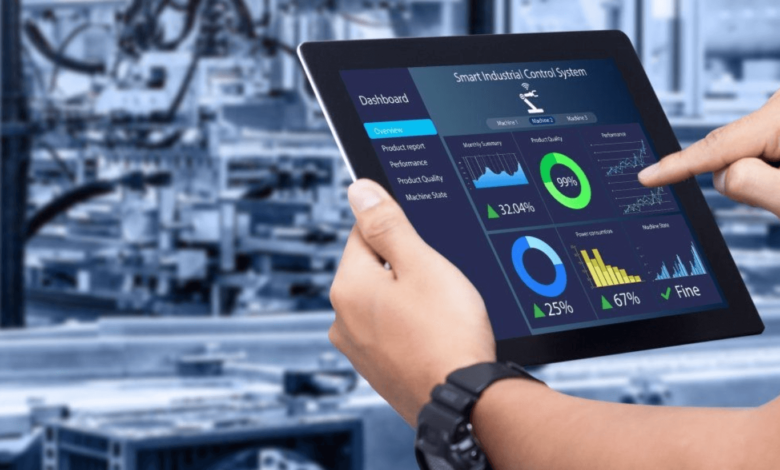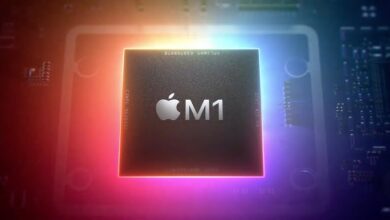Innovations in Industrial Computing Technology

The advancement of industrial computing is transforming operations and increasing productivity in a variety of sectors. These advancements in technology are transforming the way businesses operate, providing a competitive advantage through data analysis and machine communication. Let’s explore the journey of industrial computing from its beginnings to its cutting-edge future.
Evolution of Industrial Computing: From Traditional Computers to Smart Technologies
The evolution of industrial computing has been remarkable. Initially, traditional computers were the backbone of data processing in factories and operations but worked in isolation, limiting their ability to enhance efficiency or support real-time decision-making. As technology advanced, networked systems emerged, allowing machines to share information seamlessly, which led to improved workflows and reduced downtime.
With the rise of smart technologies, we entered a new era in which machines can learn from their environment and adapt in real time. Embedded sensors provide valuable data, enabling predictive maintenance strategies.
Today’s industrial computing integrates artificial intelligence and IoT, enabling smarter, more flexible manufacturing processes. The addition of cloud computing allows for global access to vast amounts of data, transforming industries worldwide.
Role of Industrial Computing in Revolutionizing Manufacturing and Operations
Industrial computing is important in transforming manufacturing and operations by integrating advanced technologies into everyday processes. Here are some key ways it is revolutionizing the industry:
- Real-time Data Processing: Industrial computing enables companies to collect and analyze data in real time. This allows for immediate decision-making, improving operational efficiency and responsiveness.
- Smart Machines and Connectivity: With advanced sensors and machine learning, smart machines can monitor their performance and communicate vital information. This facilitates predictive maintenance, reducing the likelihood of breakdowns and minimizing downtime, ultimately boosting productivity.
- Automation and Precision: Automation powered by industrial computing reduces the reliance on manual labor, thus minimizing human errors. This leads to consistent quality control, better precision, and improved product outcomes.
- Optimizing Supply Chains: By analyzing vast datasets, manufacturers can forecast demand trends, streamline inventory management, and adjust production schedules accordingly. This results in more efficient and cost-effective supply chain management.
- Agility and Adaptability: The flexibility provided by industrial computing allows companies to quickly respond to shifts in market demands, providing a competitive edge in fast-paced industries. Manufacturers can more easily pivot and adapt their processes to meet changing conditions.
Industrial computing enables a smarter, more efficient, and agile manufacturing environment, positioning businesses to thrive in an increasingly competitive landscape.
Advancements in IoT and its Impact on Industrial Computing
Advancements in the Internet of Things (IoT) are significantly impacting industrial computing by transforming the way factories operate. Here are some key ways IoT is reshaping the manufacturing sector:
- Real-time Data Collection and Analysis: IoT-enabled devices collect continuous data from machines, sensors, and equipment, enabling real-time monitoring of performance metrics. This data provides actionable insights that help optimize operations, minimize inefficiencies, and improve decision-making.
- Predictive Maintenance: One of the most powerful applications of IoT in industrial computing is predictive maintenance. By analyzing data trends from connected devices, manufacturers can identify signs of potential failures before they occur. This reduces unplanned downtime, lowers maintenance costs, and extends the lifespan of equipment.
- Cloud Integration: IoT devices can be integrated with cloud platforms, enabling remote access to real-time data. This allows for greater flexibility and collaboration across teams, improving the ability to respond to issues quickly, regardless of location.
- Enhanced Safety: IoT-driven safety measures improve worker protection. Automated alerts notify employees about potential hazards or abnormal conditions on the shop floor, reducing the risk of accidents and ensuring a safer work environment.
- Smarter Factories: IoT is central to creating smart factories that are capable of adapting quickly to changes in demand and operational conditions. By integrating IoT into industrial computing, factories can become more agile, efficient, and capable of meeting modern production requirements.
IoT advancements are enhancing industrial computing by increasing operational efficiency, improving safety, enabling proactive maintenance, and providing greater flexibility through cloud integration. These innovations are shaping the future of manufacturing.
AI and Machine Learning in Industrial Computing: Enhancing Efficiency and Precision
AI and machine learning are revolutionizing industrial computing by improving efficiency, accuracy, and decision-making. Here’s how:
- Predictive Maintenance: AI predicts equipment failures before they occur, minimizing costly downtime and ensuring optimal machinery performance. This leads to enhanced productivity and cost savings by addressing issues proactively.
- Supply Chain Optimization: Machine learning analyzes patterns in inventory management and order fulfillment, allowing companies to streamline operations, reduce waste, and save time by making smarter supply chain decisions.
- Quality Control: AI-powered systems provide higher precision in defect detection than human inspectors, ensuring products meet higher quality standards while maintaining fast production speeds.
- Industry Growth: By integrating AI into industrial systems, companies can foster growth and adaptability, making the technology an essential part of staying competitive in the modern marketplace.
Incorporating AI in industrial computing is not only beneficial but also important for future success.
Challenges and Risks Associated with Industrial Computing
Industrial computing offers tremendous advantages, but it also brings several challenges and risks that must be carefully managed. Here’s a closer look at some of the primary concerns:
- Cybersecurity: As industrial systems become more interconnected through IoT, cloud computing, and automation, they create more opportunities for cyberattacks. Malicious actors can exploit vulnerabilities to disrupt operations, steal sensitive data, or cause physical damage to equipment. Securing these systems against cyber threats is crucial to maintaining operational integrity and protecting confidential information.
- Integration Complexity: Many industries still use legacy systems that struggle to integrate with newer technologies, causing challenges in communication and interoperability. Overcoming these obstacles requires significant effort, investment, and expertise to ensure smooth data flow between old and new platforms.
- Data Management: The vast amount of data generated by IoT devices, sensors, and other connected technologies can overwhelm organizations. Collecting, storing, analyzing, and making sense of this data is a complex task. Without proper tools, processes, and skilled personnel, companies may struggle to extract actionable insights from the data, potentially losing out on valuable opportunities for optimization and improvement.
- Human Factor: A shortage of skilled labor is another challenge in implementing and maintaining industrial computing solutions. As technology becomes more advanced, companies need workers with specialized skills in areas like data analysis, automation, and cybersecurity. Training and upskilling the workforce can be time-consuming and resource-intensive, and a lack of qualified personnel can delay or hinder the adoption of new technologies.
Successfully navigating these challenges requires strategic planning, investment in cybersecurity and training, and a focus on modernizing infrastructure. By addressing these risks, companies can maximize the benefits of industrial computing while safeguarding their operations.
Read also: Aviation Problem No Fast Tech Solution
Future of Industrial Computing: Predictions and Possibilities
The future of industrial computing will bring groundbreaking innovations and transformations that will shape the manufacturing and operations landscape. Here are some key trends and possibilities to watch for:
- Edge Computing: Data will be processed closer to its source, improving response times and enabling real-time analytics for faster, more efficient decision-making.
- Quantum Computing: Capable of solving complex problems quickly, quantum computing will revolutionize resource allocation, supply chain management, and simulations, offering faster insights and improved production capabilities.
- Sustainability: Industrial computing will focus on integrating green technologies, such as energy-efficient systems and sustainable practices, to reduce environmental impact and improve energy consumption.
- Human-Machine Collaboration with AR: Augmented reality will enhance collaboration by providing real-time data and instructions to workers, improving productivity, safety, and training.
- AI and Automation: AI technology will lead to the development of more intelligent and self-sufficient systems, resulting in enhanced production, improved maintenance, and advanced robotics.
These advancements will lead to a more productive, environmentally friendly, and adaptable manufacturing setting, opening up fresh potential for growth in various sectors.





